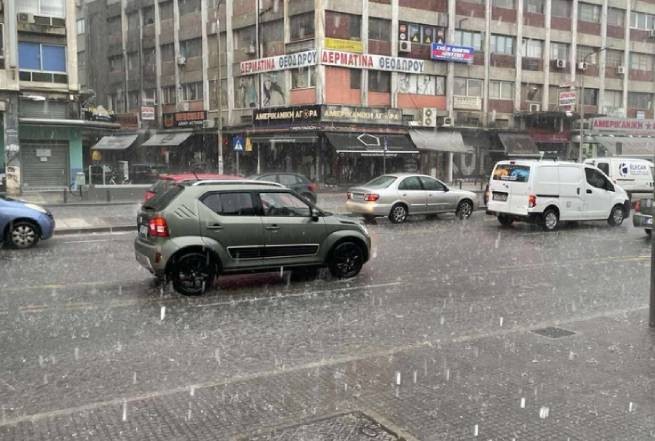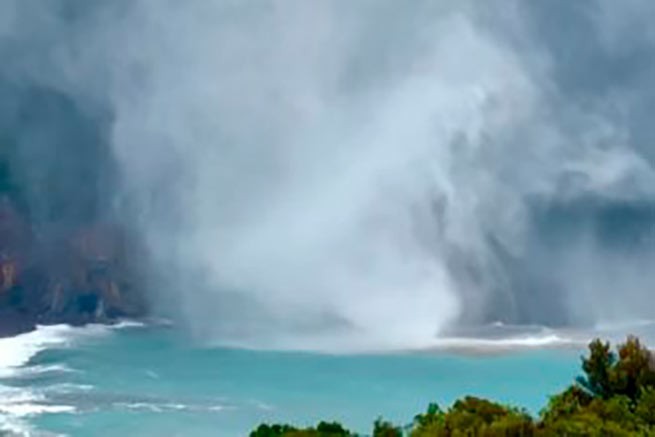A huge waterspout was spotted in the sea off the island of Evia. The unique phenomenon, especially due to its size, was filmed by local resident Spyros Soripsos and posted on social networks.
Tropical cyclone ELIAS hit the island of Evia on Wednesday, causing flooding and destruction in several villages and resorts.
A waterspout is a funnel-shaped vortex of air and water that forms over the surface of a large body of water and is connected to a cumulus cloud. It is similar in nature to an ordinary tornado. It can form when a regular tornado passes over a water surface. More often found in tropical latitudes. Unlike a classic tornado, a water tornado lasts only 15-30 minutes, is much smaller in diameter (from 5 to 200 m), the speed of movement and rotation is two to three times lower, and is not required to be accompanied by hurricane winds. There are additional differences.
Despite the fact that waterspouts are mainly born in tropical latitudes, they can also appear in temperate latitudes. They can often be seen on the west coast of Europe, the British Isles and some areas of the Mediterranean. Waterspouts are not limited to salt bodies of water – many have been observed over lakes and rivers, such as the Great Lakes. A waterspout was also seen on the Volga during the 2010 summer heat wave.
Waterspouts often found off the coast of Greece.
Υδροσίφωνας εμφανίστηκε κοντά στο Μαντούδι Ευβοίας τη Δευτέρα 4 Σεπτεμβρίου 2023.
Φωτογραφία από EviaOnline. pic.twitter.com/Y7mxuwz2R4— meteo.gr – Ο καιρός (@meteogr) September 5, 2023
The waterspout was last seen in early September off the coast of Evia.
Areas with a high incidence of seaspouts in Greece are the northern Ionian Sea, the Rhodes area and Chalkidiki, although they have appeared several times in many other regions of the Aegean Sea. Waterspouts often occur in duplicate or triplicate at the same time and are a meteorological phenomenon with a tendency to increase in frequency in our country.
However, the deadliest waterspout in Greece occurred on December 7, 1959. It caused the destruction of a boat on Lake Plastira, killing 21 people. According to meteorologist and the first Greek scientist to thoroughly study this phenomenon in our country, Michalis Sioutas, today more than 100 waterspouts are recorded annually in the maritime territory of Greece.







More Stories
Hurricane with rain and hail hits Thessaloniki (video)
Wild boars are on the loose in Nafpaktia
The number of forest fires in Greece has increased by 22% since the beginning of 2024